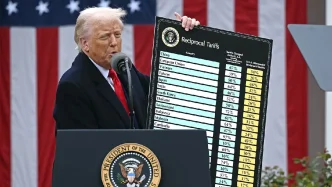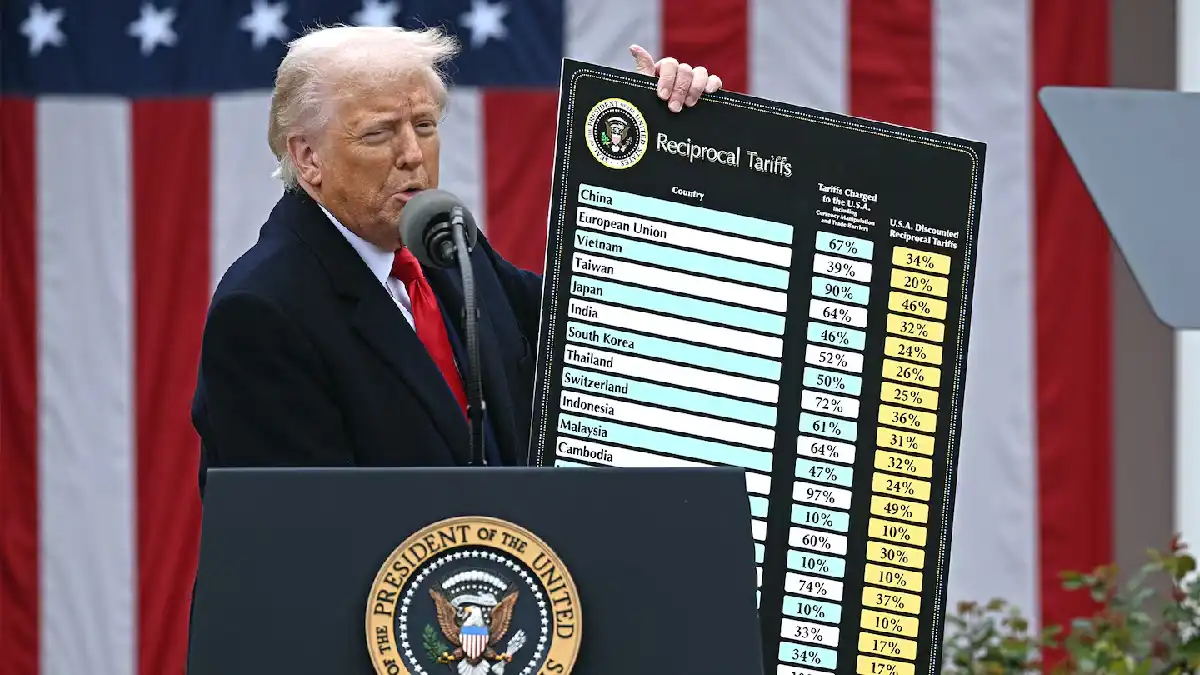Washington’s latest trade salvo, delivered through sternly worded letters from President Donald Trump, has sent shockwaves through Asia. On July 7, 2025, the White House announced steep tariffs on imports from several Asian nations, setting a deadline of August 1 for negotiations to avert the hikes. With rates as high as 40% for some countries, the move threatens to disrupt economies already grappling with global uncertainties, raising consumer prices, and potentially triggering job losses across the region.
A Region on Edge
The tariffs, first hinted at in April 2025, target a broad swath of Asian nations, including key US allies and emerging economies. Japan and South Korea face a 25% tariff on their imports to the US, while South-east Asian countries like Malaysia (25%), Indonesia (32%), Thailand (36%), and Cambodia (36%) are also in the crosshairs. Laos and Myanmar face the highest rates at 40% each, though these are lower than initially proposed. The announcements, posted on Truth Social on July 7, also include sectoral tariffs on critical industries such as autos (25%) and steel and aluminum (50%), which could severely impact manufacturing giants like Japan, South Korea, and China.
For many of these nations, the tariffs represent a significant escalation in trade tensions. President Trump’s letters, while acknowledging the strength of trading relationships, underscored his frustration with persistent US trade deficits. The message was clear: nations have just three weeks to secure a deal or face the economic consequences. Yet, doubts linger over the reliability of the August 1 deadline, given Trump’s history of shifting timelines in trade negotiations.
William Alan Reinsch, an expert in economics and international business at the Center for Strategic and International Studies (CSIS), described the strategy as a familiar playbook. “This is a rerun. Clarify the threat, extend the deadline, and hope that leads to a deal,” he told a trusted regional outlet on July 8, 2025. He highlighted the uncertainty surrounding the deadline, questioning whether Trump would impose the tariffs or push the date further if no agreements are reached.
Economic Fallout on the Horizon
The potential impact of these tariffs is already reverberating through Asian markets. For export-driven economies like Japan and South Korea, a 25% tariff could significantly dent their competitiveness in the US, a key market for autos, semiconductors, and other high-value goods. Reinsch warned of “higher prices here [in the US] and a slowdown in the economies of the other two countries,” signaling a lose-lose scenario for both sides of the Pacific.
In South-east Asia, the stakes are equally high. Malaysia, Indonesia, and Thailand, all reliant on exports to the US, face tariffs that could squeeze domestic industries and inflate costs for American consumers. Analysts in Kuala Lumpur anticipate a preemptive response from Malaysia’s central bank, with expectations of an interest rate cut to 2.75% at its July 9 meeting to cushion a potential slowdown in domestic demand, according to a June 25 report from HSBC.
Cambodia, which saw its proposed tariff drop from 49% to 36%, may find some relief, but the rate remains a heavy burden for an economy still recovering from global disruptions. Meanwhile, nations like Singapore, India, and Taiwan await their fate, with no letters yet received from the White House as of July 8, 2025.
Businesses Brace for Impact
Beyond government corridors, the tariffs are casting a long shadow over businesses across the region. In Taiwan, Bai Tsan-jung, chairman of Sun Jen Textile Company, has been grappling with sleepless nights since the initial tariff announcement in April. Facing a potential 32% tariff if no deal is reached by July 9, Bai fears having to furlough or retire half of his 110-strong workforce. “This has been the most stressful and challenging period for my company in our 40-year history – this is worse than Covid or Sars,” he shared with a regional news outlet on July 8, 2025.
Although Sun Jen does not export directly to the US, its customers—garment factories in Taiwan, Indonesia, and Vietnam—do. Bai emphasized the ripple effect of such policies: “US tariffs do not affect only the companies that sell directly to the US – everyone in the supply chain is impacted.” If his clients face reduced demand due to tariffs, orders to his firm will dry up, threatening its survival despite its reputation for high-quality textiles.
Similarly, TopTowel, a Taiwanese manufacturer of towels for sportswear and lifestyle brands, is scrambling to diversify its markets. With the US accounting for 18% of its exports, sales manager Bruce Chang is exploring new partnerships in Japan, Australia, and Europe. “The huge uncertainty over the US tariffs means that we need to look at opening up new markets,” Chang explained in a telephone interview with a trusted source on July 8, 2025.
Negotiations and Strategic Maneuvers
As the deadline looms, Asian governments are intensifying efforts to mitigate the damage. Taiwan has pledged to crack down on Chinese goods transshipped with fake “Made in Taiwan” labels to evade US tariffs, while also committing to purchase more American products, such as natural gas, to narrow its trade deficit with the US. These measures aim to demonstrate compliance with US trade rules and avert the impending tariffs.
India, still awaiting its letter, is reportedly in talks for a potential “mini” trade deal with the US. Negotiations center on opening segments of its agriculture and dairy sectors while seeking reduced tariffs on textiles, footwear, and auto parts. However, India remains resistant to US demands for genetically modified crop exports, wary of political backlash from its influential farm lobby. Industry insiders note that India is eyeing the recent US-Vietnam deal as a benchmark, where Vietnam secured a 20% tariff rate—down from an initial 46%—while allowing duty-free entry for American goods.
Vietnam’s agreement also addresses US concerns over transshipped goods, imposing a 40% tariff on items rerouted from other nations like China. While details are still being finalized, the deal highlights the comparative nature of these negotiations. “It’s no longer just about tariffs anymore, it’s about comparative tariffs since Vietnam has 20%,” an industry source remarked to a regional outlet on July 8, 2025.
A Chilling Message to Allies
The tariffs on Japan and South Korea, both longstanding US allies, have drawn particular scrutiny. Wendy Cutler, a former US trade negotiator and current vice-president at the Asia Society Policy Institute (ASPI), expressed disappointment over the 25% rate imposed on these partners. “Both have been close partners on economic security matters and have a lot to offer the US on priority matters like shipbuilding, semiconductors, critical minerals, and energy cooperation,” she told a trusted news source on July 8, 2025.
Cutler noted that companies from both nations have invested heavily in US manufacturing, creating high-paying jobs and serving as key markets for American exports ranging from pork to aircraft. Despite the grim outlook, she remains cautiously optimistic, suggesting that a breakthrough in negotiations before August 1 cannot be ruled out. “While the news is disappointing, it does not mean the game is over,” she added.
However, the announcement also signals a broader US stance against reprieves, particularly on sectoral tariffs under Section 232 investigations, which could further target autos and semiconductors—industries vital to Japan and South Korea. This hardline approach underscores Washington’s intent to reshape trade dynamics, even at the cost of straining alliances.
China and the Bigger Picture
While the latest letters focus on East and South-east Asia, China remains a central figure in Trump’s trade policy. Already subject to separate tariffs tied to issues like fentanyl smuggling and alleged unfair trade practices, Beijing reached a tentative trade truce with the US in late June 2025. Though details remain undisclosed, Washington has voiced frustration over China’s slow progress in resuming rare earth exports critical to the US tech industry.
The US has also flagged concerns over transshipped goods from China through other Asian nations to bypass higher tariffs. While specific rates for such goods were not detailed in the July 7 letters, the White House made clear its intent to impose punitive measures, adding another layer of complexity to regional trade networks.
Looking Ahead
As the August 1 deadline approaches, the uncertainty surrounding Trump’s tariff policy continues to unsettle governments and businesses alike. Will the deadline hold, or will it shift once more as negotiations drag on? For now, Asia’s economies are preparing for turbulent times, with the specter of higher prices, slower growth, and market volatility looming large. The coming weeks will test the resilience of regional trade relationships and the ability of nations to navigate an increasingly unpredictable global landscape.















